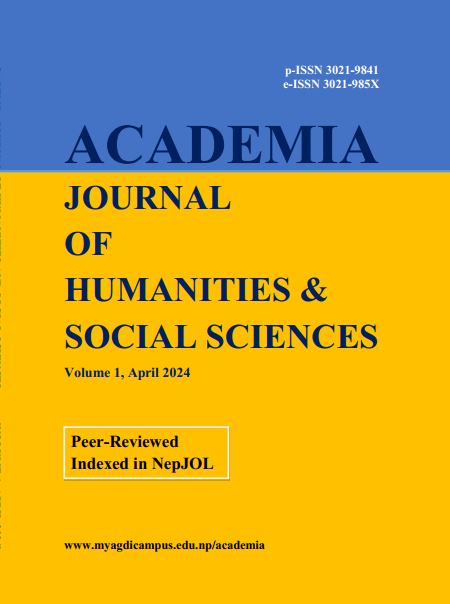Directing the Contemporary Theatre: The Case of Oki’s Night of Ijalo
DOI:
https://doi.org/10.3126/ajhss.v1i1.65003Keywords:
Theatre directing, contemporary theatre, post-dramatic theatre, mixed-media techniqueAbstract
In contemporary times, the sophistication of media gadgets coupled with the development of the media-savvy audience has necessitated the theatre to devise alternative ways to sustain audience attention and interest. This has required theatre directors to revisit their approach to interpreting contemporary performance by engaging several elements of aesthetic communication to enhance the overall outlook of the performance and boost show business. Contemporary theatre directors, as the example of Olumide Oki (2023) illustrates, have identified this need by establishing a deliberate use of media elements and thus birthing techniques essential for the creation and interpretation of the contemporary performance. This paper engages Hans-Thies Lehmann’s post-dramatic theatre as a theoretical framework. It is a descriptive study that secures its data through participant observation of the 2023 production of Night of Ijalo by the Zion Royal Theatre. Based on the perception that the media has become an intrinsic part of the daily routines of the contemporary audience, Oki prioritizes the need to create a media-intensive theatre experience for the media-savvy audience. Hence, he adopts a mixed-media technique to boost his directorial interpretation and provide a seamless connection with the audience's demand through the deliberate use of aesthetic communication, intermediality, sound prerecording, mediation and mediatisation, and spectacle. With the mixed-media technique which includes the use of several media elements, Oki presents the media as a quintessential part of the contemporary performance and recommends it to theatre directors as a valuable technique for enhancing directorial interpretation and creating a media-oriented theatre experience.
Downloads
Downloads
Published
How to Cite
Issue
Section
License
Copyright (c) 2024 The Author(s)

This work is licensed under a Creative Commons Attribution 4.0 International License.




